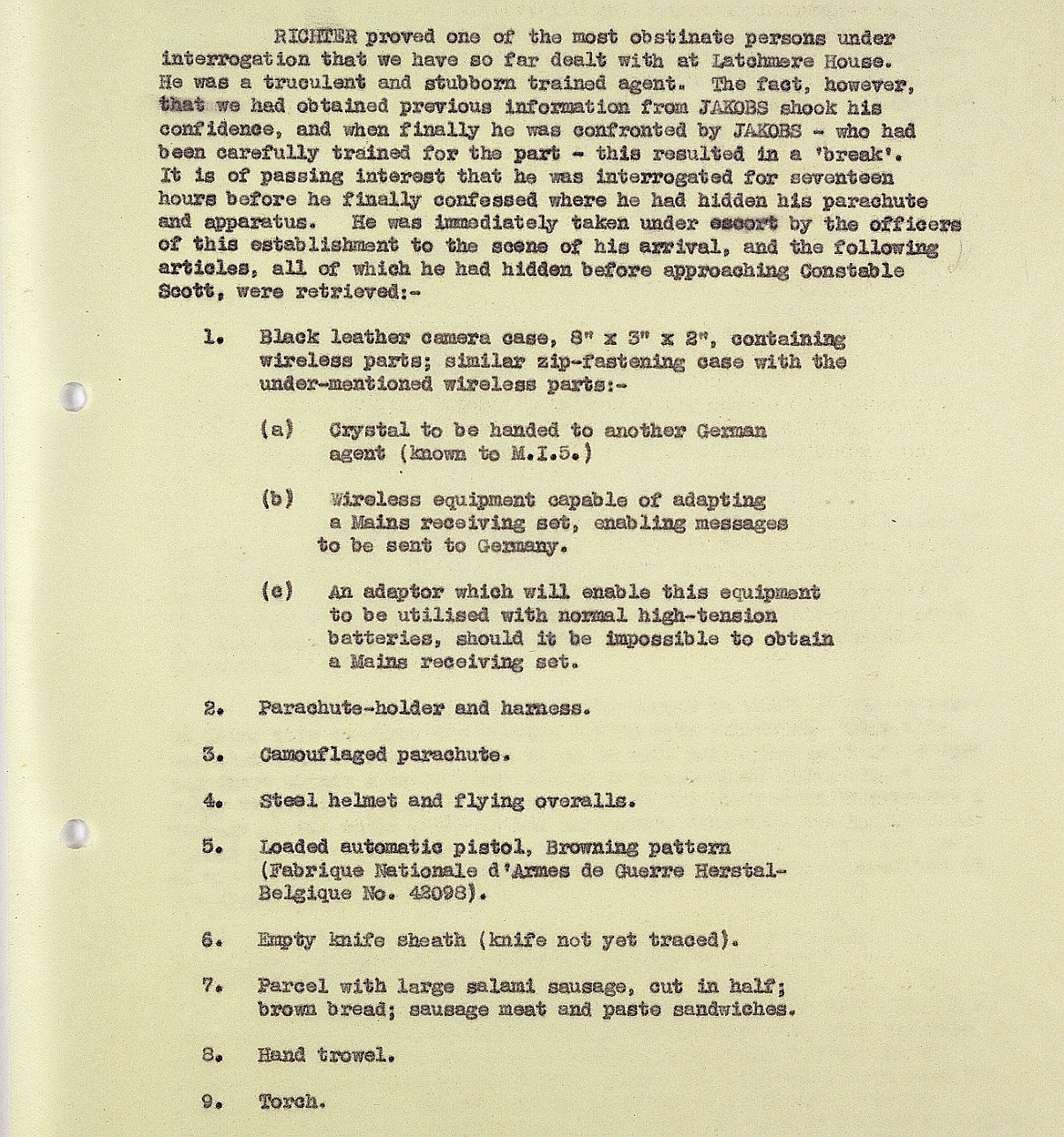
Extract from the case file on Karel Richter, 1941-1942, Catalogue ref: KV 2/32
Richter’s first mission was to pass some equipment to another spy in England, check if this spy was really a double agent and then gather information on roads and railways, use of gas masks and National Identity Cards. After hiding for two days without food, Richter felt very ill and decided to find help. He wandered on to a busy road where two lorry drivers spotted him. The lorry drivers later reported him to a policeman who took him to the station for questioning. Richter was found to be carrying forged documents and other suspicious items so the police handed him over to the Security Service. After many hours of questioning, when confronted by another German spy [Jakobs], Richter admitted that he was a German spy and gave the Security Service full details of his mission.
- How does the MI5 Officer describe Karel Richter? Why does he think this?
- Why does Richter decide to admit that he was a spy?
Look at the list of items found in the field. - Which items would be of no more use after Richter had landed?
- Which items would Richter have needed to carry out his mission?
Transcript
RICHTER proved one of the most obstinate persons under interrogation that we have so far dealt with at Latchmere House.
He was a truculent and stubborn trained agent. The fact, however, that we had obtained previous information from JAKOBS shook his confidence, and when finally he was confronted by JAKOBS – who had been carefully trained for the part – this resulted in a ‘break’.
It is of passing interest that he was interrogated for seventeen hours before he finally confessed where he had hidden his parachute and apparatus. He was immediately taken under escort by the officers of this establishment to the scene of his arrival, and the following articles, all of which he had hidden before approaching Constable Scott, were retrieved:-
1. Black leather camera case, 8” x 3” x 2”, containing wireless parts; similar zip-fastening case with the under-mentioned wireless parts;-
(a) Crystal to be handed to another German agent (known to M.I.5)
(b) Wireless equipment capable of adapting a Mains receiving set, enabling messages to be sent to Germany.
(c) An adaptor which will enable this equipment to be utilised with normal high-tension batteries, should it be impossible to obtain a Mains receiving set.
2. Parachute-holder and harness.
3. Camouflaged parachute.
4. Steel helmet and flying overalls.
5. Loaded automatic pistol, Browning pattern
(Fabrique Nationale d’Armes de Guerre Herstal- Belgique No. 42098).
6. Empty knife sheath (knife not yet traced).
7. Parcel with large salami sausage, cut in half; brown bread; sausage meat and paste sandwiches.
8. Hand trowel.
9. Torch
